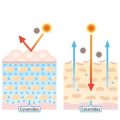Introduction to Collagen in Aesthetic Medicine
Collagen stands at the very heart of aesthetic medicine, particularly within the British context where the pursuit of healthy, youthful skin has long held cultural significance. As a primary structural protein found in the dermis, collagen is crucial for maintaining skin strength, elasticity, and resilience. Its natural decline with age leads to common concerns such as wrinkles and sagging—issues that have driven innovation in cosmetic treatments across the UK. Historically, British practitioners were among the early adopters of collagen-based therapies, embracing both imported and domestically developed solutions to address age-related changes. From its initial use in simple topical creams to more advanced injectable forms, collagen has played a foundational role in shaping the landscape of British aesthetic medicine. This historical journey reflects not only scientific advancement but also an evolving societal appreciation for subtle, refined enhancements over dramatic alterations—a distinctly British approach to beauty and self-care.
2. Early Collagen Treatments and Their Reception in the UK
The introduction of collagen treatments in British aesthetic medicine during the late 20th century marked a pivotal moment for non-surgical cosmetic interventions. The first generation of collagen therapies, primarily derived from bovine sources, was brought to the UK market in the early 1980s. These injectables were marketed as innovative solutions for softening wrinkles, enhancing lip volume, and restoring youthful contours without the need for surgical intervention.
Initially, British practitioners and patients alike approached these new treatments with both enthusiasm and caution. The allure of minimally invasive facial rejuvenation resonated with those seeking subtle enhancements, yet concerns about safety and longevity were prevalent. Regulatory oversight at this stage was developing, contributing to a cautious rollout across clinics nationwide.
Key Features of First Generation Collagen Therapies
| Aspect | Description |
|---|---|
| Source Material | Bovine (cow-derived) collagen |
| Indications | Facial lines, wrinkles, lip augmentation |
| Lifespan | 3–6 months per treatment |
| Main Concerns | Allergic reactions, need for pre-treatment skin testing |
| UK Public Perception | Mixed; curiosity tempered by safety worries and novelty factor |
Public Perception and Professional Adaptation
The British public’s initial response was shaped by media coverage highlighting celebrity endorsements as well as isolated reports of adverse reactions. While some early adopters praised the visible yet natural-looking results, others expressed apprehension regarding animal-derived ingredients and possible allergic responses. As a result, clinics often required patch tests prior to administration—a practice that influenced patient decision-making and uptake rates.
Cultural Context in the UK Market
British consumers traditionally value understatement and discretion in aesthetic enhancement. This cultural backdrop meant that subtlety in outcome was highly prized, which aligned well with what early collagen treatments could achieve. However, the necessity for repeated procedures and variable results led many to view these early therapies as a stopgap rather than a definitive solution. Practitioners learned to set realistic expectations while advocating for continued development in injectable technologies.
![]()
3. Advancements in Collagen-Based Procedures
The landscape of collagen treatments within British aesthetic medicine has witnessed significant technological and methodological progress over the past decades. Traditionally, early procedures in the UK relied heavily on animal-derived collagen, particularly bovine sources. While initially effective, these treatments presented several challenges, notably a higher risk of allergic reactions and ethical concerns regarding animal welfare—both issues that resonated strongly within British cultural and medical circles.
With increasing regulatory scrutiny and growing public demand for safer, more sustainable solutions, the sector saw a pivotal shift towards synthetic and bioengineered alternatives. The introduction of recombinant human collagen marked a notable milestone: by utilising advanced biotechnology, laboratories could produce highly purified collagen with reduced immunogenicity. This not only minimised adverse reactions but also aligned better with the UKs progressive stance on cruelty-free and vegan-friendly medical products.
Methodological refinements have paralleled these material innovations. Modern British clinics now employ minimally invasive delivery techniques such as microneedling combined with topical collagen serums, as well as precision injection protocols tailored to individual facial anatomy. These approaches contribute to more natural-looking results and quicker recovery times, which are priorities for today’s discerning clientele.
Furthermore, robust clinical governance frameworks in the UK encourage continual assessment and improvement of procedural standards. Collaboration between aesthetic practitioners, biomedical engineers, and regulatory bodies has fostered an environment where new technologies can be rigorously tested before widespread adoption. In essence, the evolution from animal-based to synthetic and bioengineered collagen treatments reflects not only scientific advancement but also the unique ethical and cultural values prevalent in British aesthetic medicine.
4. Regulatory Landscape and Professional Standards
The regulation of collagen treatments within British aesthetic medicine has undergone significant evolution, reflecting the sector’s commitment to patient safety and professional integrity. In the early years, collagen-based injectables were largely unregulated, with practitioners operating under general medical guidelines rather than specific aesthetic frameworks. However, as demand for these treatments grew and new technologies emerged, so too did the need for robust oversight.
Establishment of Regulatory Bodies
The establishment of bodies such as the Care Quality Commission (CQC) and the General Medical Council (GMC) marked a turning point. These organisations set out clear protocols for who could administer collagen treatments and under what conditions. The introduction of the Health and Social Care Act 2008 further strengthened regulatory oversight, requiring providers to register and adhere to rigorous standards of hygiene, consent, and aftercare.
Key Regulatory Milestones in Collagen Treatments
| Year | Regulatory Body/Legislation | Impact on Collagen Treatments |
|---|---|---|
| 1990s | General Medical Council (GMC) | Basic guidance on injectable substances |
| 2008 | Health and Social Care Act | Mandatory registration for aesthetic clinics |
| 2016 | CQC Updated Guidelines | Tighter controls on non-surgical procedures |
| 2021+ | Joint Council for Cosmetic Practitioners (JCCP) | Voluntary practitioner registers; focus on competence and ethics |
Ensuring Patient Safety: Best Practices
British regulators have consistently emphasised informed consent, thorough patient assessment, and stringent hygiene protocols as the cornerstones of safe collagen treatment delivery. Training requirements have also become more exacting. Only qualified medical professionals are permitted to perform certain procedures, with continuous professional development strongly encouraged.
Patient Safety Protocols in Practice
- Comprehensive pre-treatment consultation, including allergy checks and discussion of alternatives
- Use of CE-marked products approved by UK regulatory authorities
- Mandatory reporting of adverse events to encourage transparency and learning
Cultural Emphasis on Ethical Practice
The British approach has always been grounded in ethical considerations—placing patient welfare above commercial interests. This is reflected in the collaborative efforts between regulators, practitioners, and professional bodies to ensure that innovations in collagen treatments do not compromise safety or public trust.
5. Popular Collagen Treatments in the Current British Context
In recent years, the landscape of collagen treatments within British aesthetic medicine has evolved rapidly, reflecting both advances in technology and the changing expectations of patients. The most sought-after procedures currently include injectable collagen stimulators, topical therapies featuring bioactive peptides, microneedling with collagen-inducing serums, and advanced laser treatments designed to enhance natural collagen production. Among these, injectables such as poly-L-lactic acid and calcium hydroxylapatite have garnered significant interest due to their ability to provide subtle, long-lasting rejuvenation that aligns well with the understated approach often preferred by British patients.
Microneedling, particularly when combined with platelet-rich plasma (PRP) or bespoke serums, is another popular choice. This minimally invasive method appeals to those seeking gradual, natural improvements rather than dramatic changes. Similarly, non-invasive laser therapies that stimulate collagen remodelling without extensive downtime have found favour among busy professionals and those wary of surgical interventions.
Factors Influencing Treatment Preferences
The popularity of these procedures is shaped by several uniquely British factors. First, there is a notable emphasis on subtlety and authenticity—patients generally desire results that refresh rather than radically alter their appearance. This cultural preference dovetails neatly with collagen-based approaches that work with the body’s own regenerative processes. Additionally, the strong regulatory framework governing aesthetic practice in the UK has increased confidence in clinically proven treatments while discouraging untested or overly aggressive interventions.
Accessibility and Practitioner Expertise
The widespread availability of skilled practitioners across the UK also plays a crucial role. Leading clinics in cities like London, Manchester, and Edinburgh offer a broad array of collagen treatments backed by robust aftercare protocols. The willingness of practitioners to tailor treatment plans to individual skin types and concerns further bolsters patient trust and satisfaction.
Trends Driven by Demographics
Younger demographics are increasingly turning to preventative collagen treatments, influenced by social media awareness and a growing focus on long-term skin health. Meanwhile, older patients often seek restorative procedures to address volume loss and skin laxity. In both groups, safety, efficacy, and a natural look remain paramount considerations.
Overall, the current British context for collagen treatments is marked by a blend of innovation and restraint—an approach rooted in scientific rigour, regulatory oversight, and a distinctive national aesthetic sensibility.
6. Emerging Trends and Future Directions
The British aesthetic medicine landscape continues to evolve rapidly, with collagen treatments remaining at the forefront of innovation. Looking ahead, the focus is clearly shifting towards personalised therapies that cater to the unique needs and expectations of UK clientele. Practitioners are now exploring advanced diagnostic tools—such as genetic profiling and skin biome analysis—to design bespoke collagen regimens for each patient. This tailored approach aims to maximise efficacy while minimising risks, reflecting the growing demand for safety and individuality in British aesthetics.
Minimally invasive technologies are also gaining significant traction. The development of sophisticated injectable formulations, micro-needling devices, and energy-based modalities allows practitioners to stimulate endogenous collagen production with reduced downtime. These advancements are especially popular among British patients who value subtle, natural-looking results that fit seamlessly into their busy lifestyles. Furthermore, there is increasing interest in combining collagen-inducing treatments with regenerative techniques like PRP (platelet-rich plasma) and stem cell therapies to enhance outcomes.
Sustainability and ethical sourcing are additional factors shaping future directions in the UK market. Clients are becoming more discerning about product origins, leading brands to prioritise transparency and environmental responsibility in their supply chains. As regulations tighten and consumer awareness grows, this trend is expected to influence both product development and clinical practice.
In summary, the evolution of collagen treatments in British aesthetic medicine is characterised by a move towards personalised care, minimally invasive solutions, and a strong commitment to ethical standards. As research progresses and technology advances, these innovations will undoubtedly continue to shape the sector—offering UK patients safer, more effective, and highly customised aesthetic experiences.

